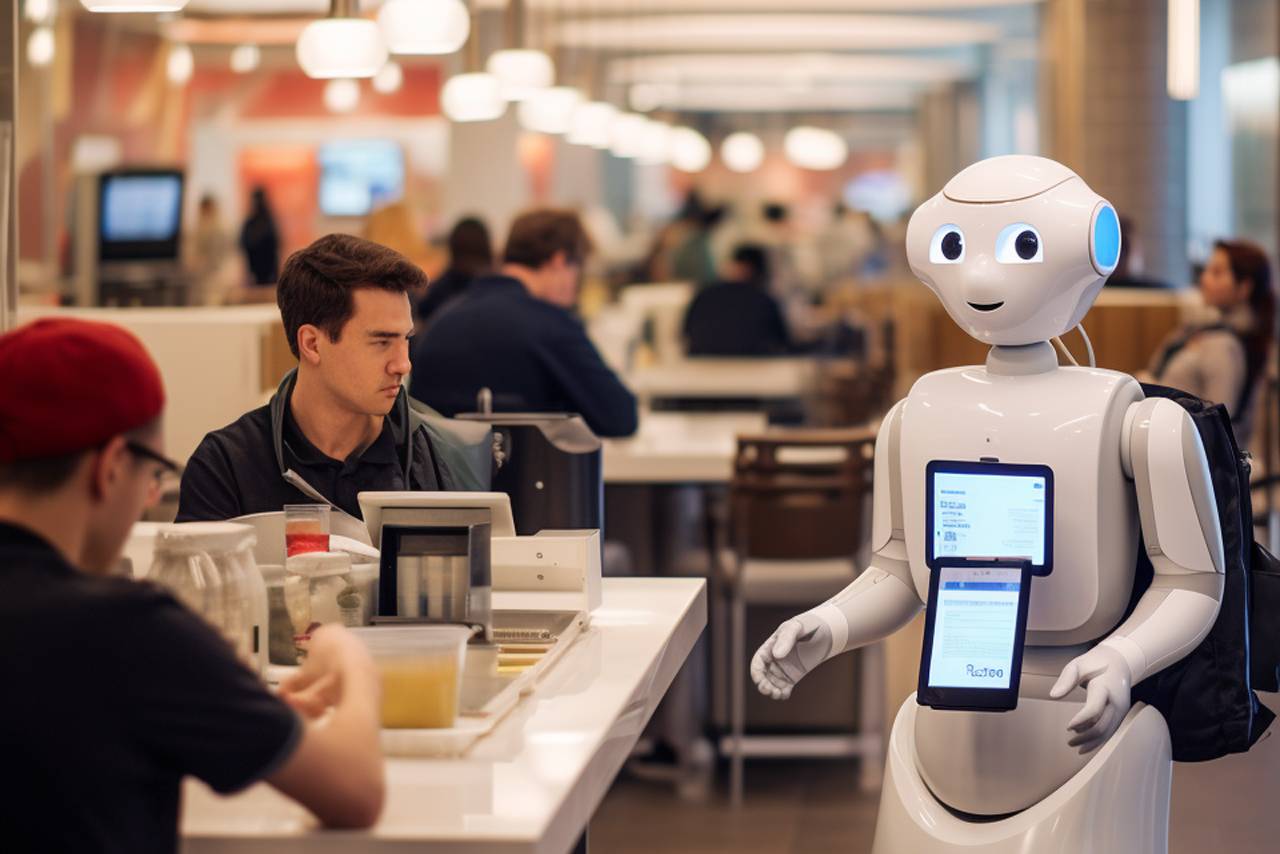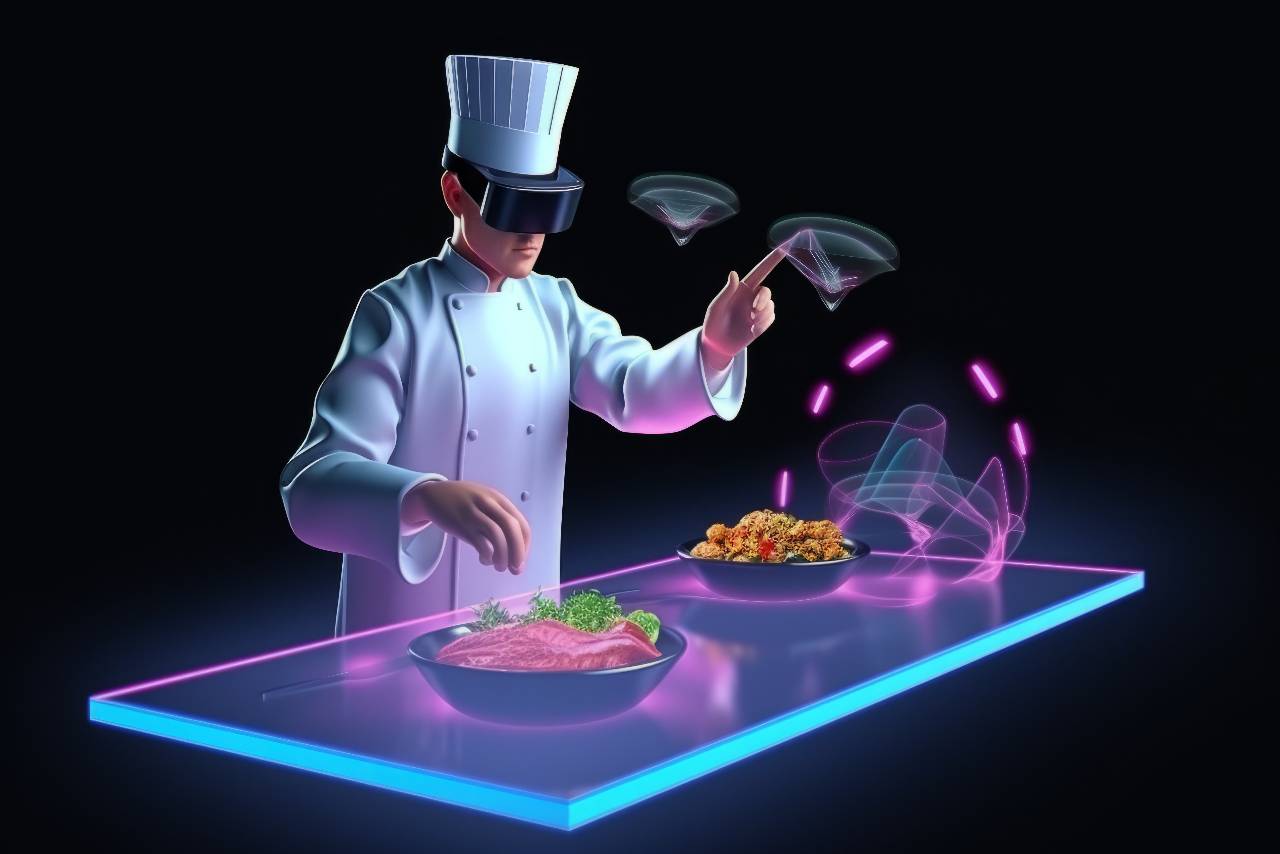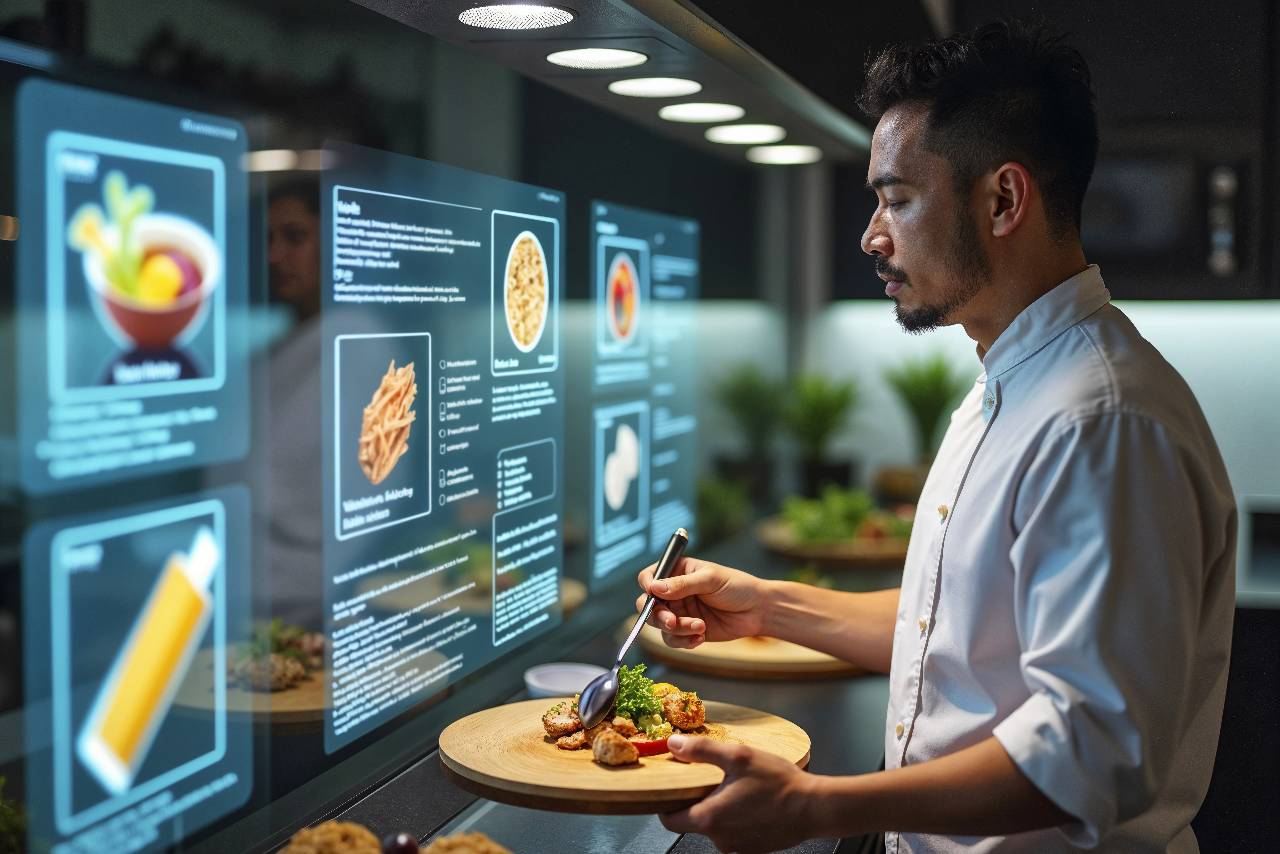How AI Will Transform Your Restaurant in 2025
AI is transforming restaurants in 2025 by improving efficiency, menus, staffing, safety, and marketing while keeping hospitality personal and human.

The New Era of Restaurant Operations
As we move through 2025, artificial intelligence, or AI, is quickly becoming a regular part of how restaurants operate. AI is helping restaurants run more smoothly and serve guests better. For restaurant owners and managers, this means new tools that can save time, cut costs, and improve the guest experience.
At first, using AI might feel confusing or overwhelming. You might worry it's too expensive or that it will take away the personal touch that makes your restaurant special. But AI doesn't replace people - it's there to help. It can handle routine tasks and provide useful insights so you and your team can focus on what matters most - cooking great food and welcoming your guests.
This article will explain in simple terms how AI is changing the way restaurants work in 2025. You'll learn how these tools can assist with managing the kitchen, scheduling staff, and connecting with customers. Knowing these changes will help you get ready and use AI to make your restaurant better, without losing the heart and soul of what makes it unique.

Streamlining Front-of-House Operations with AI
One of the first places you'll notice AI making a difference is at the front of the house, where guests interact with your restaurant. AI-powered tools can manage reservations, organize wait-lists, and offer personalized guest interactions, helping your team work more efficiently.
1. Automatic reservation management is a big benefit. AI systems can handle bookings without mistakes like double bookings or long waits. They use past data and current availability to suggest the best times for customers, which means smoother seating and happier guests. This takes the pressure off your staff from keeping track manually.
2. AI chatbots and voice assistants can answer common questions quickly, such as menu items, opening hours, or special deals. These tools free up your team to focus on face-to-face service and work 24/7, so customers get answers even when the phone is busy or your restaurant is closed.
It's important to remember that AI supports your staff - it doesn't replace them. By taking care of repetitive or time-consuming tasks, AI lets your team spend more time on what really matters - connecting with guests and providing excellent hospitality. This mix of technology and personal touch can improve customer satisfaction and keep your restaurant running smoothly, even during the busiest times.
Kitchen Efficiency and Inventory Management
AI is changing the way kitchens operate by making everything more organized and efficient. One of the biggest challenges in a restaurant kitchen is managing inventory - knowing what you have, what you need, and when to order. AI systems can analyze past sales, seasonal trends, and even local events to predict how much food you'll need. This helps avoid both running out of popular ingredients and overstocking items that might go to waste.
By having better control of inventory, you can cut costs and reduce food waste, which is good for your budget and the environment. AI can also track expiration dates and storage conditions, alerting your team if something is close to spoiling or if storage temperatures aren't right. This kind of monitoring keeps food safe and fresh.
In the kitchen, AI can help streamline workflows by suggesting the best way to prepare and cook orders based on real-time demand. For example, it can prioritize dishes that take longer to cook or group similar orders to speed up service. This means less waiting for customers and a more balanced workload for your chefs.
Another important benefit is that AI helps with quality control. By monitoring cooking times, temperatures, and portion sizes, AI can ensure consistency, so every dish meets your restaurant's standards. This consistency builds trust with customers and keeps them coming back.
Overall, AI tools help your kitchen run more smoothly, save money, reduce waste, and deliver better food - all essential factors for success in today's restaurant world.
Enhancing Menu Engineering Through Data-Driven Insights
Your menu plays a big role in what guests order and how much money your restaurant makes. AI can help you make smarter choices by using data to guide your menu decisions. Here are the key ways AI can improve your menu -
1. Analyze Sales and Customer Preferences - AI looks at which dishes sell the most, which bring in the most profit, and which slow down the kitchen. This helps you decide which items to keep, promote, or remove from your menu.
2. Track Seasonal and Local Trends - Certain dishes might be more popular during specific seasons, or ingredient prices might change throughout the year. AI helps you adjust your menu to fit these changes, keeping it appealing and cost-effective.
3. Reduce Menu Complexity - Having too many items can overwhelm the kitchen and slow service. AI suggests ways to simplify your menu by grouping similar dishes or removing low-selling items, making your kitchen more efficient and maintaining food quality.
4. Optimize Pricing Strategy - AI can recommend price adjustments based on customer demand, food costs, and competitors' prices. This helps you find the right balance between making a profit and keeping customers happy.
By using AI in these ways, you create a menu that customers love, your kitchen can handle more easily, and your restaurant earns more - all based on real data, not guesswork.

Optimizing Workforce Scheduling and Labor Costs
Managing staff schedules is one of the biggest challenges restaurant owners face. Over-staffing can increase labor costs, while under-staffing can hurt service quality and stress your team. AI is becoming a valuable tool to help balance these needs by creating smarter schedules based on real data.
AI-powered scheduling tools analyze past customer traffic, seasonal trends, and special events to predict how busy your restaurant will be on any given day or time. This helps you schedule the right number of staff - no more, no less. When your schedule matches actual demand, you save money on unnecessary labor and avoid overworking employees during slow periods.
Another important feature is that AI can consider employee availability, skills, and preferences when making schedules. For example, it can assign tasks based on who is best suited for certain roles or who prefers specific shifts. This thoughtful approach helps improve staff satisfaction and reduce turnover.
AI scheduling tools also allow for quick changes and real-time updates. If a staff member calls in sick or unexpected busy periods arise, AI can suggest replacements or adjust shifts quickly, helping keep your restaurant running smoothly without disruption.
Reducing labor costs with AI doesn't mean cutting corners on service. Instead, it means using data to plan smarter, so your team can work efficiently and feel supported. This leads to a better experience for both employees and guests. By embracing AI for scheduling, you'll gain control over one of your biggest expenses and improve overall restaurant performance.
Personalized Marketing and Customer Engagement
In today's restaurant world, connecting with customers beyond their visit is key to building loyalty and driving repeat business. AI is transforming marketing by helping you reach the right guests with the right message at the right time - without guessing or wasting resources.
AI analyzes data from your past customers, such as what they ordered, when they visited, and how often. Using this information, it creates personalized marketing campaigns tailored to each customer's preferences. For example, if a guest frequently orders vegetarian dishes, AI can send them promotions about new vegetarian menu items or upcoming plant-based specials. This level of personalization feels thoughtful and relevant, increasing the chances they'll come back.
AI also helps you understand your customer base by grouping people with similar tastes or behaviors. This makes it easier to design offers or events that appeal to specific groups like families, young professionals, or frequent lunch visitors. Instead of broad messages, your marketing becomes more focused and effective.
Another benefit is that AI can automate communication through email, SMS, or app notifications, sending timely reminders about reservations, special offers, or loyalty rewards. This saves your team time and keeps customers engaged without being intrusive.
At the same time, AI respects customer privacy by using data responsibly and allowing guests to control how they receive marketing messages.
By using AI-powered marketing, your restaurant can build stronger relationships with guests, improve repeat visits, and make every customer feel valued - all while saving time and marketing budget.
Ensuring Food Safety and Quality Control
Food safety and quality are essential for every restaurant. AI can help you manage these responsibilities more effectively by automating important checks and alerts. Here are the main ways AI supports food safety and quality -
1. Monitor Storage Conditions in Real Time - AI-connected sensors track the temperatures in refrigerators, freezers, and storage areas. If anything falls outside the safe range, the system alerts your team immediately. This prevents spoilage and keeps food fresh.
2. Track Expiration Dates and Inventory Rotation - AI keeps an eye on ingredient use-by dates and reminds staff when items need to be used soon. This reduces waste and prevents serving expired products.
3. Ensure Proper Cooking Processes - AI tools can monitor cooking times and temperatures, making sure dishes are prepared safely and consistently. This improves taste, texture, and food safety.
4. Maintain Hygiene and Equipment Standards - AI can send reminders for cleaning schedules and track equipment maintenance. This helps your restaurant stay compliant with safety regulations.
By handling these tasks automatically, AI reduces the risk of mistakes, ensures food quality stays high, and frees your team to focus on preparing great meals and serving guests.
Preparing Your Restaurant for AI Adoption
Bringing AI into your restaurant can feel like a big step, but it doesn't have to be overwhelming. Taking a thoughtful, step-by-step approach will help you get the most value while keeping your team comfortable and confident.
First, assess your current needs and challenges. Identify the areas where AI can make the biggest difference - whether it's managing reservations, controlling inventory, scheduling staff, or marketing. Understanding your priorities will guide you in choosing the right tools.
Next, start small with easy-to-use AI solutions. Many AI tools don't require complex setups and can be integrated with your existing systems. Trying out one or two AI applications lets you see real benefits quickly and helps your team get used to new technology gradually.
It's also important to train your staff and communicate clearly. Help your team understand how AI supports their work rather than replaces them. Provide training and encourage questions to build trust and ease concerns.
Don't forget to monitor results and adjust as needed. Use data from AI tools to track improvements in efficiency, costs, and customer satisfaction. If something isn't working well, you can tweak your approach or try other solutions.
Finally, keep the human touch at the center. AI should free up your team to focus on what they do best - connecting with guests and creating memorable experiences. Technology is a tool to support your restaurant's unique personality, not replace it.
By planning carefully and embracing AI step by step, your restaurant can improve operations and stay competitive in 2025 and beyond.